Archaeology & History
Children’s Drawings of Gladiators and Hunters Unearthed in Pompeii
Researchers put the artists between the ages of five and seven.
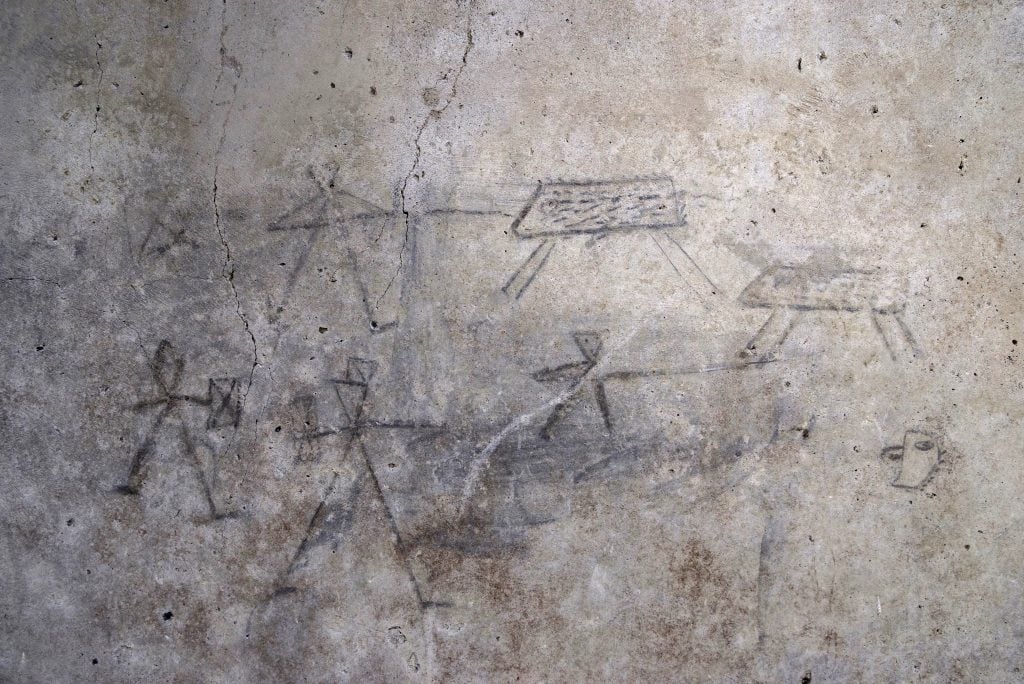
Artifacts unearthed in Pompeii have offered insight into how citizens of the ancient Roman city lived, cooked, ran for office, and made cement. But what of its youngest residents? Well, recent excavations have turned up traces of their youthful preoccupations, too.
Archaeologists at the Pompeii Archaeological Park have discovered a series of charcoal drawings at the insula of Chaste Lovers, in the courtyard of the House of the Second Last Supper. In 79 C.E., when Mount Vesuvius erupted and decimated the city, the site was under construction, with unplastered walls and erected scaffolding.
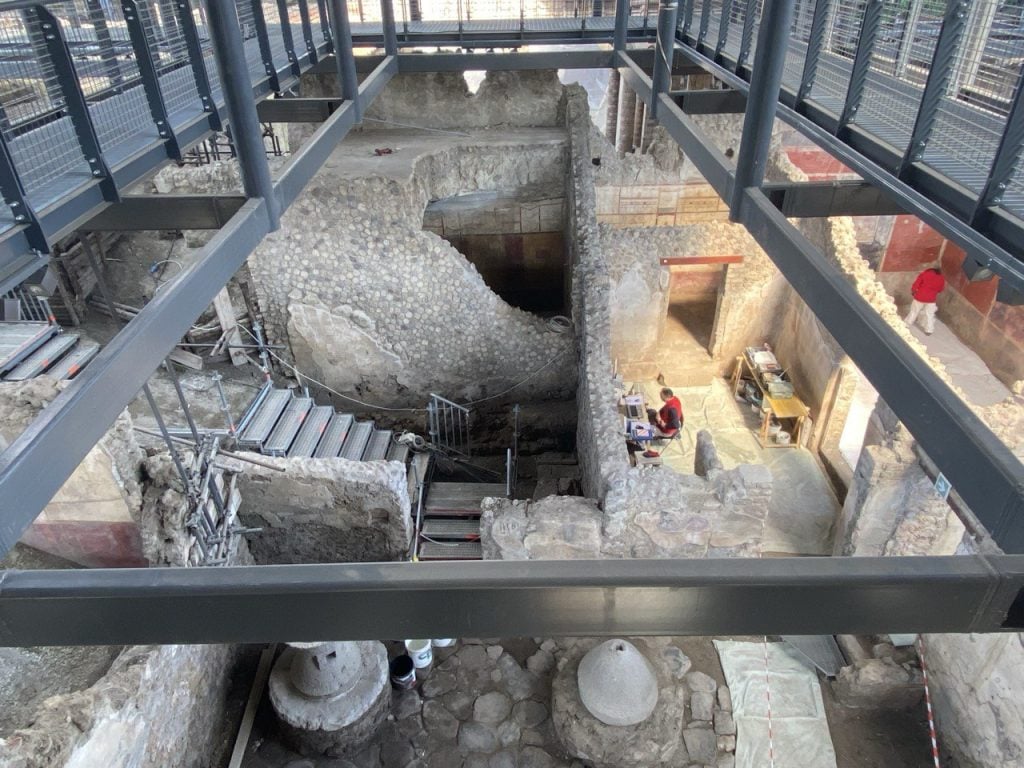
The Chaste Lovers insula at the Pompeii Archaeological Park. Photo courtesy of the MIC – Archaeological Park of Pompeii.
Researchers believe that children had likely scratched these sketches into the wall while playing in the courtyard. Located about 0.5 to 1.6 feet off the floor, the charcoal sketches include depictions of gladiators, a hunting and boxing scene, the head of a bird of prey, and a ball game. An outline of small hands points to the drawings’ authors, said the team, who reported its latest findings in the May 28 issue of the site’s e-Journal.
“Given the simplicity of the execution, naivety of the line, and the simplifications of the iconographic, the drawings seem to have been executed by hand of a child,” wrote the archaeologists, who put the children’s ages between five and seven.
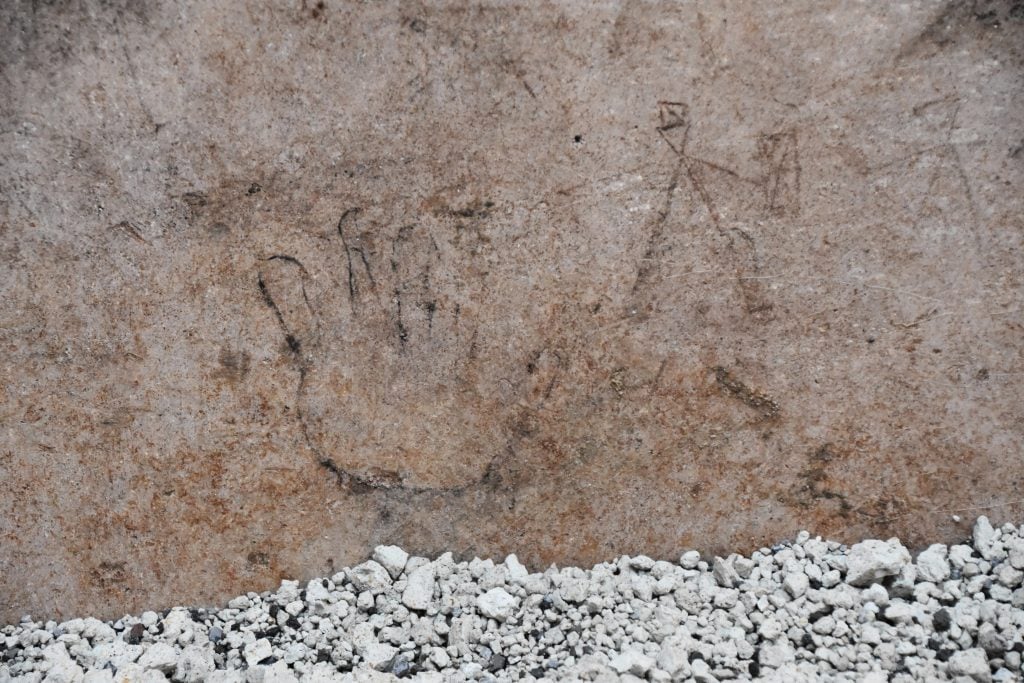
One of the charcoal drawings found at the Pompeii Archaeological Park. Photo courtesy of the MIC – Archaeological Park of Pompeii.
The graffiti also suggests that youths were part of the spectators at Roman arenas and were drawn from what they had witnessed. Researchers consulted with psychologists at the University of Naples Federico II to affirm this hypothesis, according to Gabriel Zuchtriegel, director of the Pompeii Archaeological Park.
“We came to the conclusion that in all likelihood the drawings of the gladiators and hunters were made on the basis of a direct vision and not from pictorial models,” he said in a statement. “Probably one or more of the children who played in this courtyard, among the kitchens, latrine, and flowerbeds for growing vegetables, had witnessed fights in the amphitheater, thus coming into contact with an extreme form of spectacularized violence.”
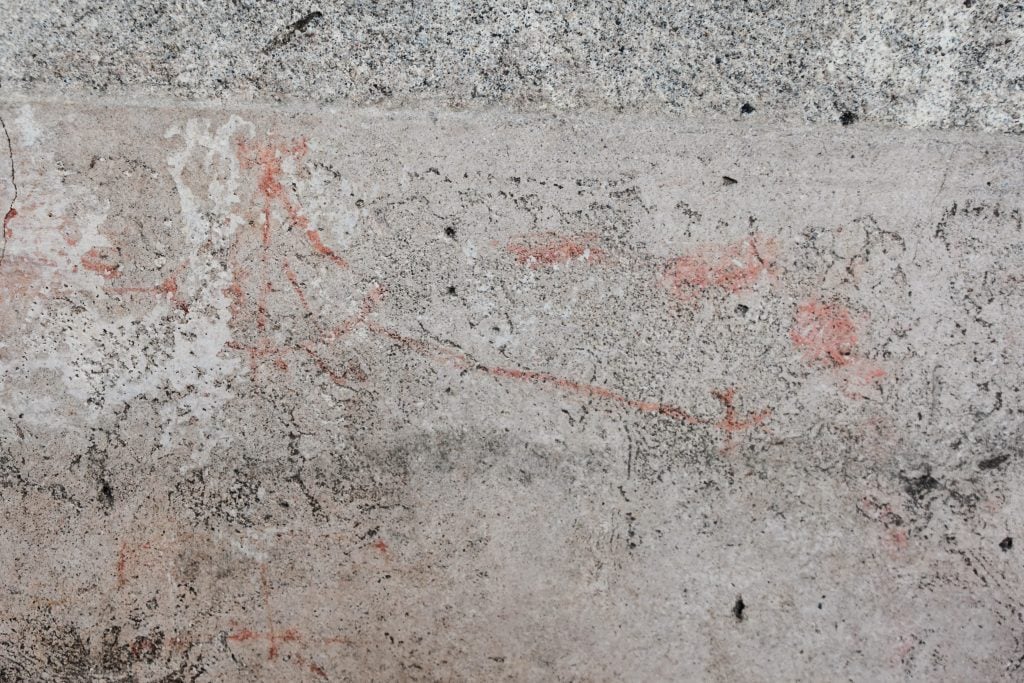
One of the drawings found at the Pompeii Archaeological Park. Photo courtesy of the MIC – Archaeological Park of Pompeii.
The team further speculated that these children were likely not from families of wealth, despite the sumptuous residences on the street.
“Indeed, there is an atmosphere of precariousness, in which we can imagine children abandoned to themselves for entire days, while their parents looked after their affairs,” they wrote.
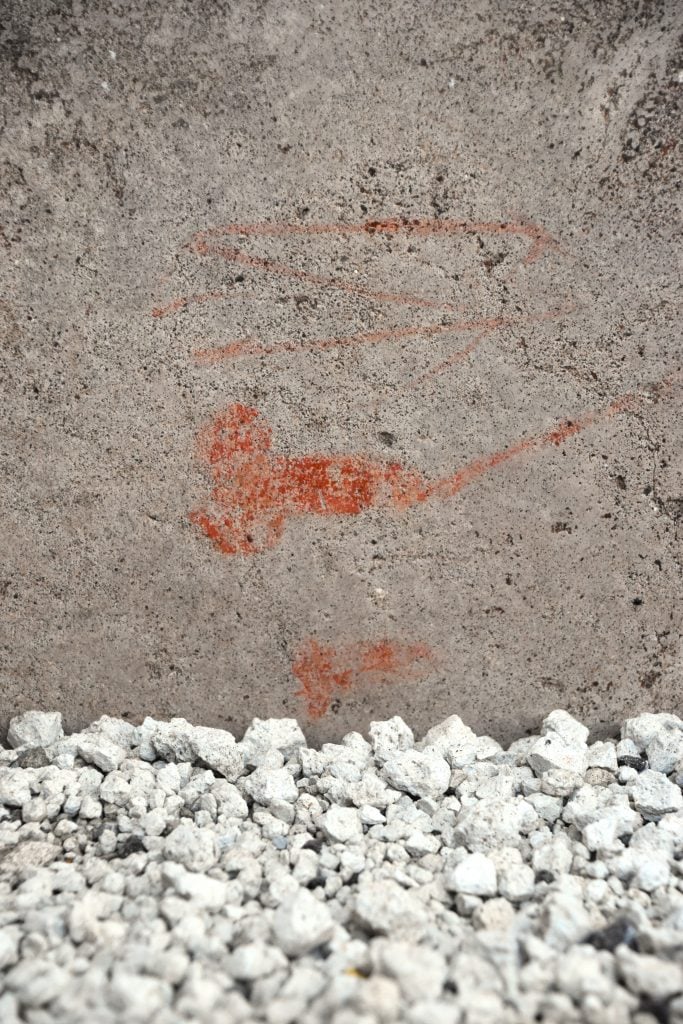
One of the drawings found at the Pompeii Archaeological Park. Photo courtesy of the MIC – Archaeological Park of Pompeii.
The park’s new report also noted the discovery of frescos in the House of Painters at Work. The pictures depict deities such as Aphrodite, Dionysus, and Apollo, alongside mythical figures from centaurs to griffins. On a separate wall, a smaller painting features a child wearing a traveler’s cloak and accompanied by a dog.
These frescoes join others recently found at the site, including images depicting Greek myths found at the House of Leda and the Swan, and scenes of the Trojan War discovered in the ruins of a dining hall.





